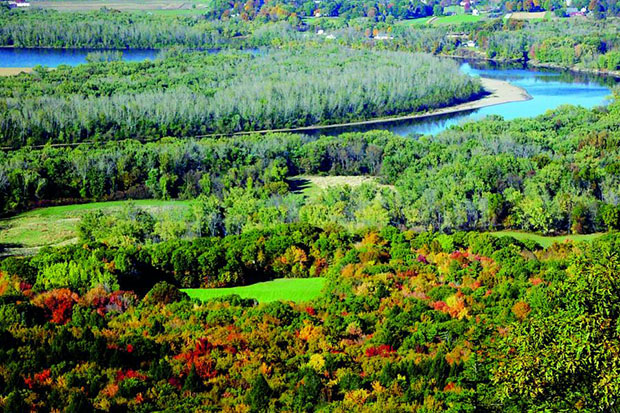Brandeis professor urges protection of New England forests and farmland
 Photo/David Foster
Photo/David FosterForest in the Pioneer Valley, Mass.; to view facts and figures about the ongoing forestry loss, view the slideshow.
A new study co-authored by environmental studies professor Brian Donahue, a New England forestry and farming historian, finds that New England is losing 65 acres of forest per day to land conversion.
The study, called “Wildlands and Woodlands: Farmlands and Communities,” illustrates the severity of this discovery and urges the region to rethink its land use practices, protect more forest and farmland and increase local food and wood production.
“It’s not just the rate of loss,” said Donahue. “It’s the way the landscape is being fragmented by sprawl into pieces that lose ecological integrity. We look to a future where development is more compact, and our forests and farmlands continue to deliver benefits such as water quality, carbon sequestration and a full range of biodiversity, along with wood and food.”
Donahue and his co-authors released “Wildlands and Woodlands” on Sept. 19, 2017 at Harvard University in front of researchers, politicians, farmers and agriculturalists.
“Wildlands and Woodlands” has an ambitious goal: to permanently protect at least 70 percent of New England’s forest by 2060 and convert 15 percent of the region's land for agricultural purposes.
Taking into account projections synthesized by “Wildlands and Woodlands” researchers, New England risks losing up to one million acres of forest by 2060 if current trends continue.
To combat the chipping away of that enormous swath of landscape, the plan envisions a balanced approach to conservation and preservation, with most of the protected land sustainably managed for wood, food and recreational uses. It also urges communities to recognize the environmental, economic and developmental benefits of forests and farmland.
“This isn’t just about ‘stopping development’ and ‘setting aside open space.’ It’s about wild places, but also the places where we live,” said Donahue. “We’ve found that since our earlier reports were released, conservation organizations and land trusts have been taking a more ambitious view of their missions to help create a healthy future for the region, in which sustainable development and robust natural infrastructure work together. This new report is a next step in bringing those pieces together, and keeping the conversation moving forward.”
The first New England “Wildlands and Woodlands” report calling for large-scale forest protection was released in 2010. Donahue and other co-authors followed in 2014 with another study – “A New England Food Vision” – which outlined a way for the region to produce half its food by 2060, serving values such as food justice and healthier eating.
“Wildlands and Woodlands” sets ambitious yet necessary goals for forest protection and asserts that the new framework would turn the food vision into reality if 15 percent of New England’s land were used for agriculture.
Donahue and his co-authors have a positive outlook for the future of “Wildlands and Woodlands” thanks in part to New England’s strong history of stewardship for its forests and the collaboration among farmers, researchers, politicians and the public to safeguard nature.
That said, “Wildlands and Woodlands” is advocating for an increase in funding for land protection, reducing resource consumption and supporting rural communities. It also encourages implementing land-use protections, building greener structures and improving public transportation.
“These reports show ways that engaged academics can partner with landowners, non-profit organizations and government agencies to help bring scholarly scrutiny, coherence and vision to efforts that are taking place in a thousand local places,” added Donahue. “Because in the end, it is the local work to protect and care for land and improve the health of communities that counts, and that is what we are trying to encourage.”
Categories: General, Research, Science and Technology





